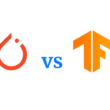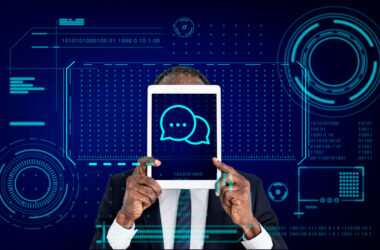Introduction
In our increasingly interconnected world, generative AI is revolutionizing language translation, a ground-breaking technology. Generative AI, as opposed to conventional rule-based systems, uses deep learning methods like neural networks to comprehend context, nuance, and idiomatic idioms, producing more precise and accurate translations.
In today’s globally interconnected world, language translation is crucial. It eliminates linguistic barriers, promoting intercultural exchange and cooperation. It gives businesses the ability to reach a variety of markets, increasing competition.
It helps healthcare providers provide appropriate care to patients who speak many languages. It also encourages cultural exchange, diplomacy, and understanding in a connected globe.
Generative AI services have translated faster and more reliably and are accessible to a broader audience, making it an indispensable tool in our globalized society. As this technology continues to evolve, it promises to enrich further our ability to communicate and connect across languages.
Understanding Language Barriers
The Challenge of Language Diversity
The complexity of language diversity poses significant challenges to effective communication. Generative AI services, powered by automated translation technology, are redefining language barriers.
They offer benefits like accurate and rapid multilingual communication, mitigating the impact of language diversity on global interactions. These advancements highlight the critical role of Generative AI Solutions in Translation in bridging linguistic gaps and fostering cross-cultural understanding.
Language Barriers in Business and Beyond
Despite their subtle pervasiveness, language barriers significantly impact society. Through automated technology, generative AI redefines these barriers. It promotes growth in business by facilitating international trade.
It encourages intercultural dialogue and understanding, which benefits society. AI-enabled multilingual communication becomes a potent tool for addressing these barriers.
The Power of Generative AI in Translation
How Generative AI Improves Translation?
The automation and improvement of translation processes are fundamentally dependent on generative AI. Deep learning algorithms comprehend context, nuance, and idiomatic idioms, producing more precise and accurate translations.
It adapts to changing linguistic systems and produces consistent, accurate translations by continually learning from enormous datasets. Thus, generative AI improves and speeds the translation process, providing effective and trustworthy language solutions in our globalized society.
Benefits of Generative AI in Translation
The use of generative AI significantly improves translation efficiency and accuracy. It uses automatic translation technology to comprehend context, idiomatic idioms, and linguistic nuances to produce more accurate and natural translations.
It maintains consistency in quality by continuously learning from enormous datasets and adapting to changing languages. This helps Multilingual Communication with AI, removing language barriers, promoting global understanding, and streamlining translation operations.
Thus, the role of generative AI services in redefining language translation is significant, making them an essential tool in our globally interconnected world.
Applications of Generative AI in Translation
Real-Time Language Translation
Language Translation Tools powered by AI enable real-time cross-cultural communication. Unlike human translation, they process vast data quickly, ensuring efficiency. Continuous improvements in Translation Quality Assurance point to a promising future where AI enhances global communication.
Multilingual Content Creation
Generative AI is a flexible method for multilingual content production. It can effectively create multilingual content by comprehending linguistic nuances and context, producing high-quality material. This technology is crucial for international communication and outreach since it speeds the process and ensures accuracy and consistency across multiple languages.
Benefits of Implementing Generative AI in Translation
Improved Communication
AI-powered language translation tools are revolutionizing cross-cultural and global communication. AI provides accurate translations quickly and consistently, eliminating language barriers and promoting intercultural understanding in contrast to the limits of human translation.
Accuracy is guaranteed through translation quality assurance procedures. As we look to the future of language translation, AI is positioned to play an even more crucial role by easing cooperation, streamlining and effectively communicating across language barriers, and enhancing cross-cultural interactions globally.
Time and Cost Savings
Businesses leverage Generative AI in Translation to reap the benefits of enhanced efficiency and cost-effectiveness. This technology streamlines communication across diverse markets, reducing the need for costly human translators.
It ensures consistent and rapid translations, fostering global expansion and customer engagement. By automating language-related tasks, businesses can allocate resources Strategically and compete effectively globally, making Generative AI services a valuable asset in today’s business landscape.
Challenges and Considerations in AI-Powered Translation
Accuracy and Nuance
Compared to human translation, language translation tools need help achieving translation accuracy and maintaining cultural nuances. Machines might not have the context and cultural sensitivity necessary for cross-cultural communication.
The Future of Language Translation promises AI developments to handle these difficulties better, boosting global communication while respecting cultural diversity. Translation Quality Assurance techniques help reduce errors.
Ethical and Privacy Concerns
Data privacy concerns are included in ethical considerations for AI translation. When translating, AI systems handle enormous volumes of private information, which raises questions regarding data security and confidentiality.
To address these ethical issues and foster trust in AI-powered translation technology, it is essential to ensure compliance with data protection laws and put in place strong security measures.
Implementing Generative AI in Translation Processes
Steps to Implement Generative AI for Translation
Integrating Generative AI into translation processes involves several steps:
- Assess Needs: Identify translation requirements and languages involved.
- Choose a Provider: Select a Generative AI service provider that suits your needs.
- Data Collection: Gather relevant content for training the AI model.
- Model Training: Train the AI with your data for language-specific nuances.
- Integration: Implement the AI into your translation workflow.
- Quality Assurance: Continuously monitor and fine-tune the AI for accuracy.
- Benefit: Enjoy improved translation efficiency, accuracy, and Multilingual Communication with AI.
Choosing the Right AI Translation Tools
When selecting Generative AI solutions for translation, consider these key factors:
- Language Compatibility: Ensure the AI supports the languages required.
- Translation Quality: Test the AI’s accuracy and fluency.
- Customization: Choose a solution tailored to a specific industry or content needs.
- Data Security: Verify data privacy and security measures.
- Scalability: Opt for a solution that can grow with your translation demands.
- User-Friendly Interface: Select a platform that integrates smoothly into your workflow.
- Support: Prioritize providers offering reliable customer support and regular updates.
Measuring Success and Key Metrics
Key Performance Indicators (KPIs) To Gauge AI-Powered Translation
The following Key Performance Indicators (KPIs) can be used to gauge the effectiveness of generative AI in translation:
- Measure the accuracy of the translations produced by the AI against standards set by humans.
- Compare the speed and resource savings to conventional translation techniques.
- Analyze the cost savings brought forth by translations powered by AI.
- Gather comments from customers to evaluate the accuracy of the translations.
- Assess the AI’s capacity to scale as translation requirements grow.
- Ensure the AI complies with data privacy laws to maintain privacy.
- Examine the AI’s capacity to adjust to particular translation requirements related to a given industry.
- Measure the consistency of translations between different content kinds and languages.
Continuous Improvement with AI Translations
Metrics can be used by businesses to improve translation quality over time. Use BLEU or other unbiased metrics to evaluate translation accuracy, fluency, and relevance. Determine what needs to be improved by examining user feedback and complaints. Monitor KPIs like resource allocation, turnaround time, and cost efficiency.
Utilizing these data enables firms to improve their translation procedures, use superior AI models, and sustain a high-quality standard over time.
Case Studies
Real-World Examples of AI-Powered Translation Success
ALI BABA:
Global e-commerce behemoth Alibaba uses generative AI to speed up international platform trading. Alibaba delivers translations for product listings through this ground-breaking technology, simplifying communication between merchants and customers from various linguistic backgrounds.
This improves the platform’s usability and encourages seamless interactions, eventually promoting international trade. Please visit Alibaba’s official website or pertinent news sources for the most recent details and insights on how it uses generative artificial intelligence for translation.
MICROSOFT:
In the digital age, Microsoft’s Translator service is at the forefront of erasing linguistic boundaries in the digital age. This service enables real-time translation on various platforms, including Microsoft Office, Skype, and Azure, by utilizing the capabilities of generative AI. This game-changing technology has been adopted by businesses and people who have used it as the foundation of their multilingual communication strategy.
For companies, Microsoft Translator improves international collaboration and broadens the market reach of their goods and services. It helps businesses communicate continuously with partners, clients, and staff worldwide, promoting more efficient cross-border operations and growing worldwide reach.
Future Trends and Developments
The Evolving Landscape of AI-Powered Translation
Language barriers can be overcome, and international contact is facilitated thanks to the field of AI-powered translation, which is poised for amazing developments and trends.
- Improved Translation Quality: A higher level of translation quality is now possible thanks to generative AI in translation, which always improves to provide more accurate and culturally sensitive translations. Deep learning and natural language processing (NLP) developments are improving translation accuracy, precision, and nuance.
- Real-Time Multilingual Communication: The accelerated and seamless development of AI-powered translation services makes real-time multilingual communication possible. Customer service, foreign business meetings, and social connections can all benefit greatly from this.
- Industry-specific customization: AI translation models are being developed for various sectors, including e-commerce, legal, and the legal sector. The industry-specific norms and regulations are met by translations thanks to this modification.
- Expanded Language Coverage: AI translation is increasing its language coverage, making it feasible to translate dialects, geographical differences, and less widely used languages. For communication to be genuinely global, this inclusivity is essential.
- Voice Translation: Voice-powered translation is more widely used today since it enables users to speak normally while having their words accurately translated in real time. This is helpful for travelers, global commerce, and accessibility requirements.
- Data privacy: Security is becoming increasingly important because AI translation entails processing enormous volumes of data. Encryption and privacy protection are both advancing.
- Human-AI Collaboration: Collaboration between humans and machines is essential to developing AI translation. Experts use AI tools to improve their translation abilities, leading to faster and more accurate work.
- Machine learning Adaptation: AI translation models are improving at changing to new terminology and emerging languages, making them more future-proof.
- Global Content Creation: AI produces and translates content in numerous languages. This makes it easier for content producers to reach more people.
- Integration into Everyday Life: From smartphones and wearables to augmented reality (AR) and virtual reality (VR) apps, AI translation is seamlessly interwoven into many facets of our lives.
Due to these trends, AI-powered translation is becoming an essential tool for bridging language barriers in our globalized society. This has ramifications for a variety of companies as well as for people looking to communicate across boundaries and cultures.
Conclusion
Language translation is being revolutionized by generative AI, which provides more accuracy, real-time communication, and specialized business solutions. The future of AI translation offers even more linguistic diversity, including regional dialects and less widely spoken languages.
The integration of voice-powered and real-time multilingual communication will become smoother, and translation quality will be improved through collaboration between people and AI. Trust in these cutting-edge translation tools will be ensured by the continued importance of data privacy and security.
Overall, a world where language boundaries are no longer impossible will enable greater international understanding and communication.
Frequently Asked Questions (FAQs):
What Is Generative AI in Translation?
Generative AI in translation refers to applying artificial intelligence, particularly generative models like neural networks, to automate and improve language translation.
This technology analyzes text in one language and generates equivalent content in another, considering context, idiomatic expressions, and nuances.
It has revolutionized translation services by providing more accurate and context-aware results, enabling efficient communication across linguistic boundaries in our globalized world.
How Accurate Is AI-Powered Translation?
Although AI-powered translation has made tremendous progress in accuracy, it could be better. The precision level depends on the material’s complexity, language pairs, and context.
AI translation is accurate for widely used languages and idioms. However, intricate technical or literary materials or rare languages can provide difficulties. Human oversight or post-editing is frequently required to guarantee the highest level of accuracy, especially for crucial or sensitive content.
Can AI Replace Human Translators?
AI has greatly advanced in language translation but cannot fully replace human translators. While AI offers speed and efficiency, human translators bring cultural context, idiomatic expressions, and nuanced understanding that machines struggle to replicate.
Human knowledge is frequently needed for complex texts, creative content, and highly specialized disciplines. AI can support human translators by automating monotonous activities, assisting with research, and boosting productivity.
However, the human touch is still necessary to ensure the highest quality translations, especially when accuracy and cultural sensitivity are crucial.
What Industries Benefit Most from AI-Powered Translation?
AI-powered translation greatly benefits industries with a global reach and various linguistic needs. It is essential to attracting global clients in e-commerce, tourism, and healthcare, as it facilitates multilingual patient communication.
AI translation is used in the legal and financial industries for document processing and international trade. Tech corporations localize software and content. The audiences of media and entertainment grow. AI translation is also necessary for international diplomacy and cross-cultural communication.
What Are the Key Considerations When Selecting AI Translation Tools?
When choosing AI translation tools, consider factors like language support, accuracy, customization for specific industries, data privacy, scalability, user-friendliness, support, and cost. Assess how well the tool aligns with your translation needs and integrates into your workflow for optimal results.










